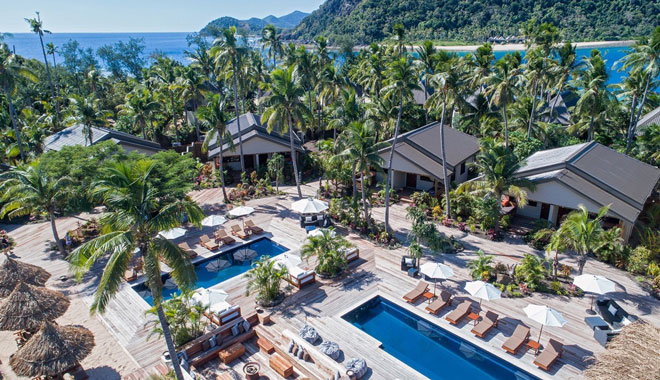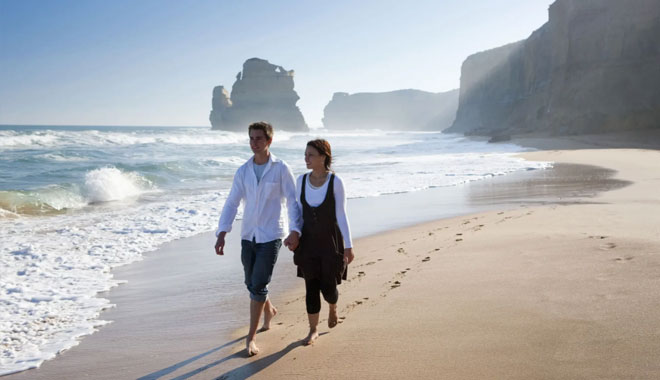
One of the famous attractions in Western Australia - The Remarkable Wave Rock
By Jenny Li | 3:31pm Aug 4, 2023
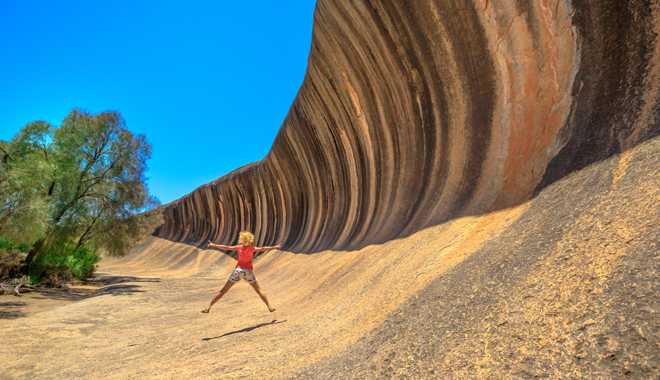
@Australian outback freedom concept. Happy Caucasian woman jumping at Wave Rock in Hyden, Western Australia. Female jumper in a natural rock formation from the shape of a wave in Hyden Wildlife Park.
Wave Rock is a rock formation that resembles a wave in the sea. It stands approximately 15 meters high and stretches about 110 meters in length. Located in the northern part of a large granite rock formation known as Hyden Rock, this solitary rock island is situated 3 kilometers east of the town of Hyden and 296 kilometers southeast of Perth. Wave Rock, along with Hyden Rock, is part of the 160-hectare Hyden Wildlife Reserve.
A wall is constructed above Wave Rock, following its contour and encircling half of Hyden Rock. This wall serves to collect and direct rainwater into a storage reservoir. The wall and reservoir were built by the Public Works Department of the Eastern Karlgarin District in 1928 and underwent renovation and expansion in 1951 to accommodate the growing population of Hyden. Such water catchment walls are common in the wheatbelt region.
Wave Rock holds significant cultural significance for the local indigenous people and attracts over 140,000 visitors annually from around the world.
Hyden Rock, including Wave Rock, was formed by the Yilgarn Craton movement around 2.6 billion years ago, composed of biotite, K-feldspar, and porphyritic granite. Hyden is a granite island, comprised of three hilltops with a broad valley in between, now designated as a protected area. The middle and eastern hilltops are connected by a low plateau, formed through a series of geological processes. The initial changes occurred over 100 million years ago in the Cretaceous period when the granite beneath the crust was uplifted, resulting in varying degrees of deformation due to connections. Deep-seated rock beds under the granite island surrounded relatively softer granite, making it more susceptible to weathering and erosion. With the separation of the Australian and Antarctic continents, the southwestern landscape of Australia formed, and as the surrounding rocks eroded, the local granite island remained.
Wave Rock is a classic example of a geological feature known as a "flared slope" in geomorphology. Flared slopes are surfaces of inclined or inward-curving rock beds, often found at the bottom and top of mountain islands and granite formations. Flared slopes are well developed in the southwestern and southern regions of Australia. Some theories suggest that flared slopes are formed by the erosion of underground water containing special chemical compositions surrounding the granite island. As the land uplifts, the eroded portions gradually detach from weathering, leaving relatively harder flared slopes behind.
Two other famous rocks near Wave Rock include Hippo's Yawn and Camel Rock.
In 2008, a Japanese modeling crew for the next generation visited Wave Rock for a photoshoot.
In 2014, Taiwanese actress Vivian Hsu chose Wave Rock as the backdrop for her wedding.
The video game "The Cunning Fox Adventure" features Wave Rock as one of its settings.

Australian outback freedom concept. Happy Caucasian woman jumping at Wave Rock in Hyden, Western Australia. Female jumper in a natural rock formation from the shape of a wave in Hyden Wildlife Park.
Recent Posts
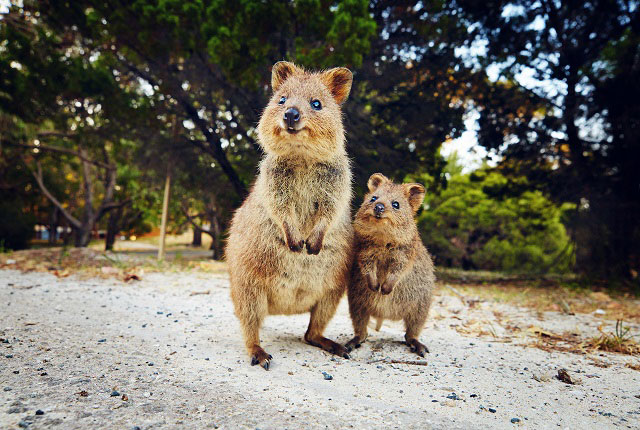
Smiling Ambassadors of Western Australia: Quokka
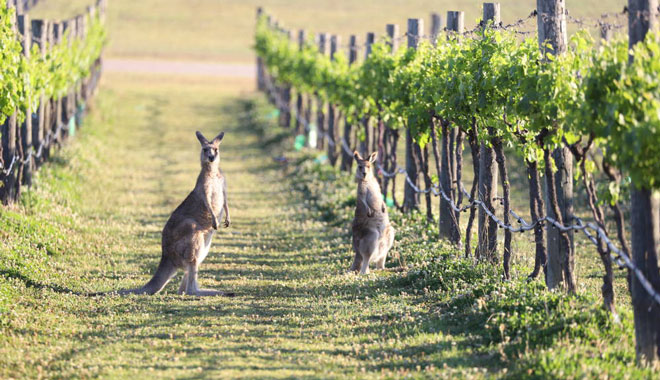
Exploring the Wine Region of Western Australia: Margaret River
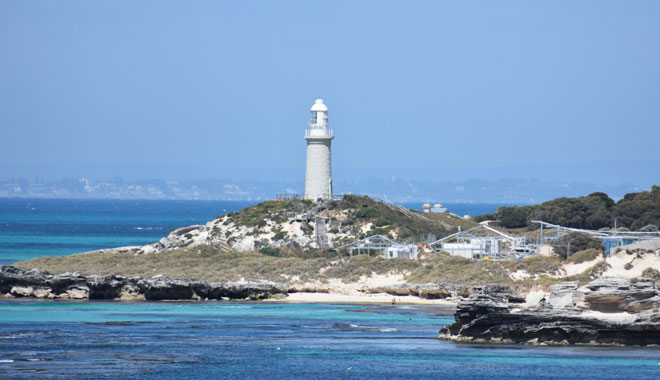
Exploring Western Australia's Paradise Island: Rottnest Island

One of the famous attractions in Western Australia - The Remarkable Wave Rock
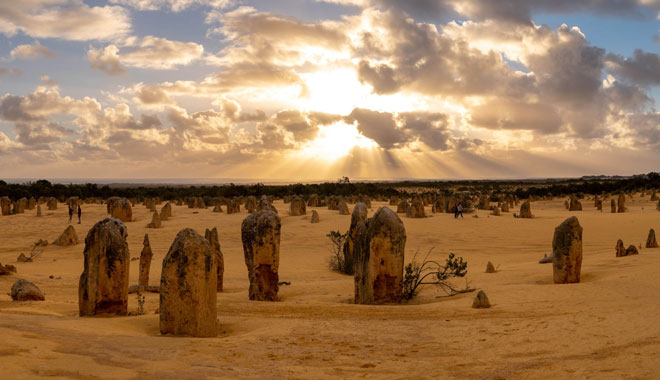
How did the Pinnacles in Western Australia form?
Welcome to FIT Travel
FIT Travel 歡迎您
FIT Travel 欢迎您
Select Your Language
選擇您的語言
选择您的语言
Your language prefererence can be changed at any time in Settings.
您的語言之後還可以在賬戶設定里或者點擊上方的語言按鈕設定.
您的语言之后还可以在账户设定里或者点击上方的语言按钮设定.
